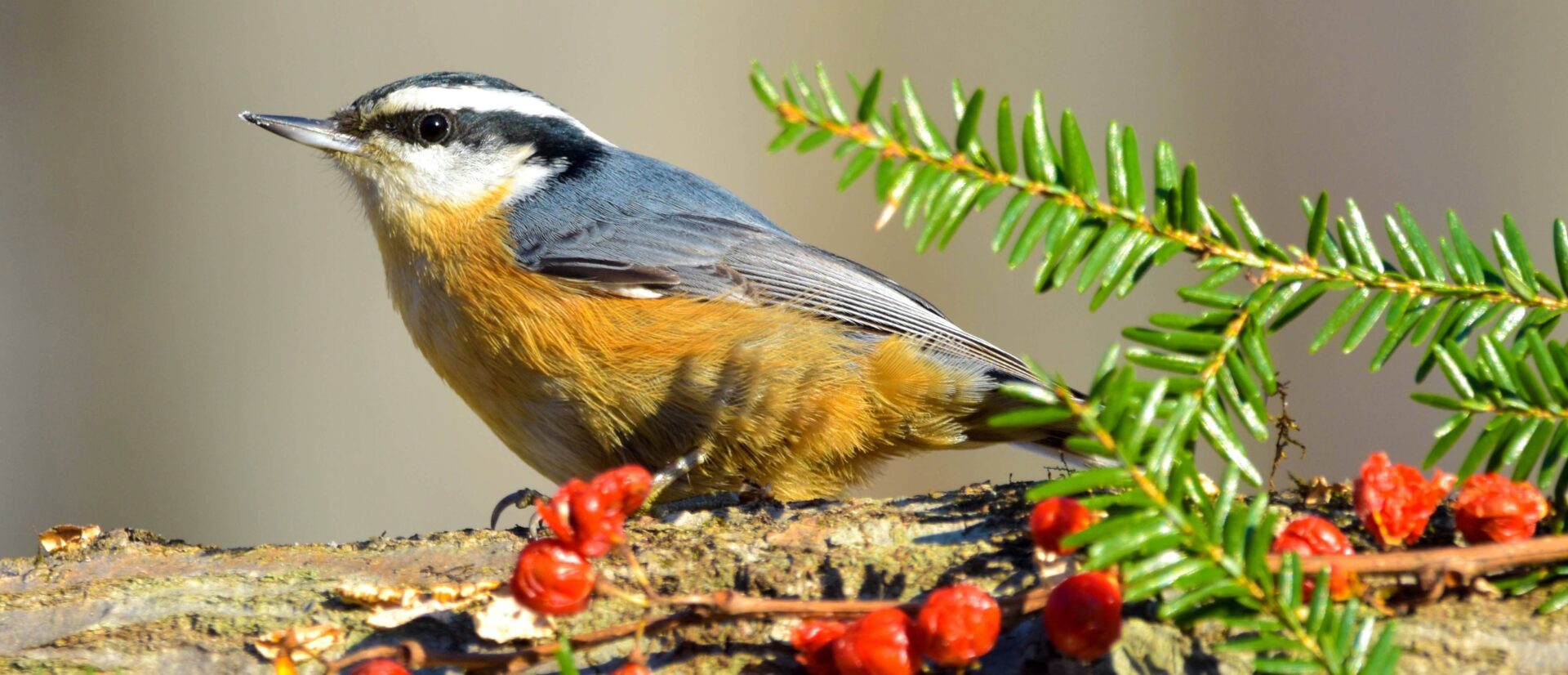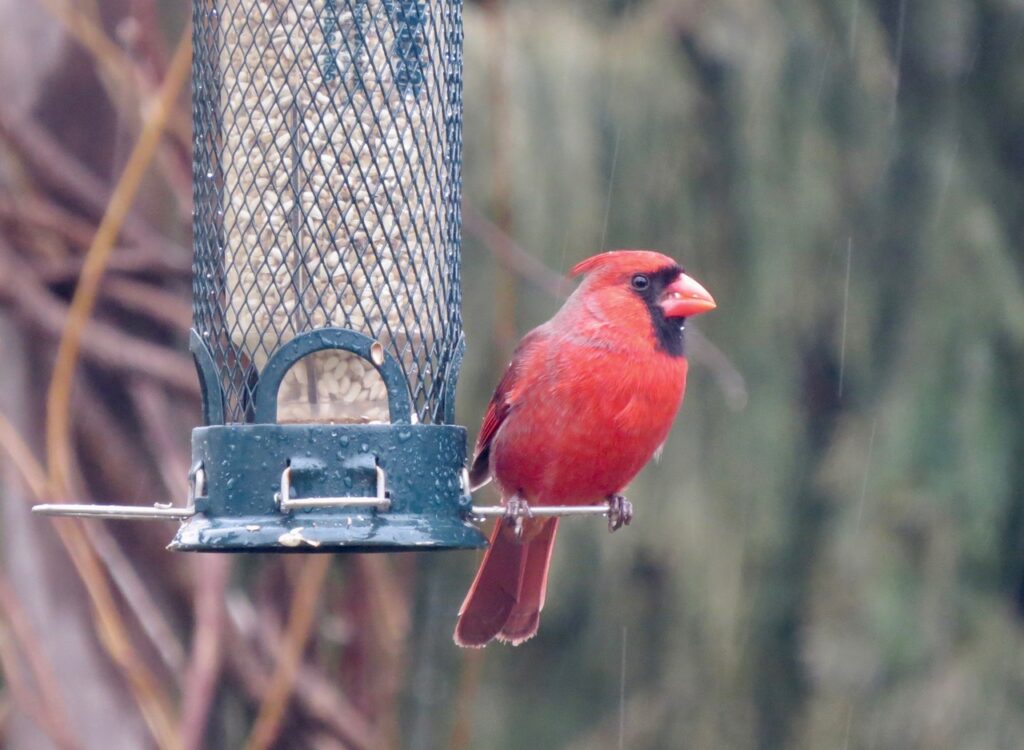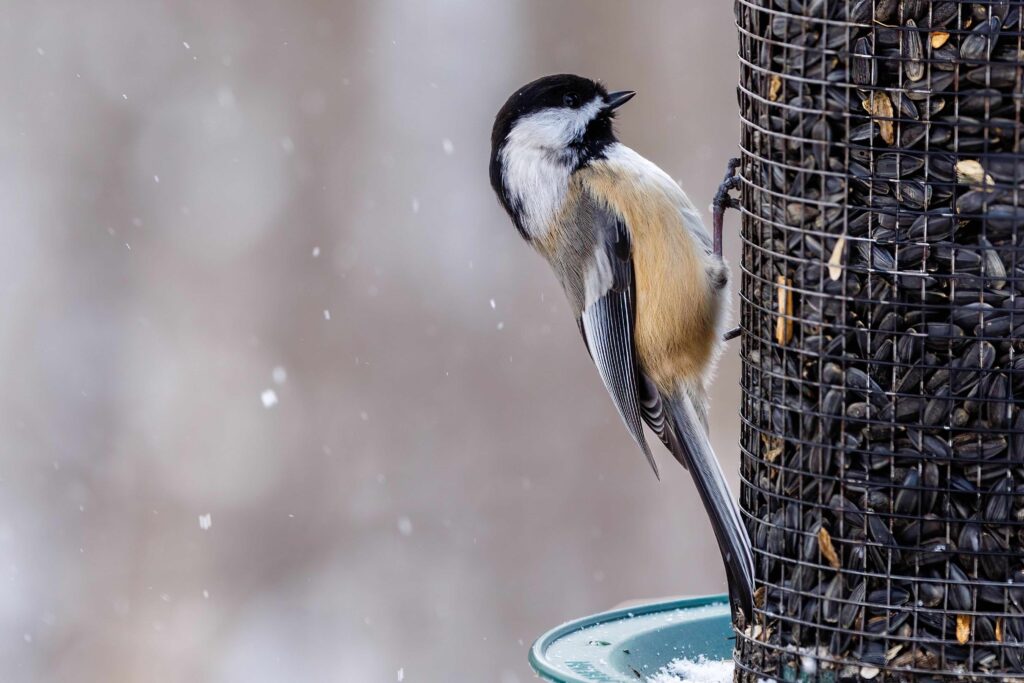Feed the birds – the right way

Setting up a backyard feeder for your feathered friends is a rewarding way to connect to nature and some ancient traditions.
A few years ago, we were finally successful in growing giant-headed sunflowers. They stood tall over the back of our garden plot, nodding in the breeze, signalling to the birds in our yard, “just a bit longer and there will be plenty to eat.”
We did not, however, leave them on the stalk for the birds to pick clean. We cut them down and brought them into the house to dry. On Boxing Day, we tied them to the back fence so our feathered neighbours could enjoy their own little holiday feast.
It turns out we were participating in a centuries-old northern European/Slavic tradition of feeding the birds around Christmas time. Traditionally, farmers in those countries would take small sheaves of wheat and fix them to trees or fence posts on Christmas Day as an offering to the starlings to ensure a good harvest for the year.
They were likely also hoping that the starlings wouldn’t let themselves into the farmer’s silo and clean out last year’s harvest, but whatever the intent, the spirit of offering something to the birds at that time has been passed down through history.
As we get our first few flakes of snow, many of us in Hamilton are getting ready to take part in a modern version of this as we put up our winter bird feeders.

Of course, the absolute best way to attract birds to your yard is not to put out a feeder, but to plant trees, shrubs and flowers like a serviceberry tree, coneflowers, native asters and dogwoods, along with a few evergreens for winter shelter. These plants naturally feed and sustain birds that come down here from the north to spend their winters.
If you’ve done all that already though, or if you’re not able to, a bird feeder is a nice way to bring some life to your yard or balcony for the winter months.
Here are just a couple of tips to make sure you get the best experience and that your feeder is safe and healthy for the birds you are trying to help.
For starters, make sure you choose a feeder that you can clean easily. You will need to spray down or dunk the whole thing in a solution of bleach water (one capful per gallon of water should be fine) roughly every two weeks. This will prevent the spread of diseases like avian flu, which killed several large raptors last summer, or house finch eye disease, which laid waste to the house finch population last winter. Both of those diseases are easily spread by feeders. Choose a feeder you can clean easily and effectively enough that it’s not a chore you will keep putting off.
Secondly, make sure you use good quality seed. Does your seed package say “premium” or “top quality”? Well, the proof is in the bag.
If most of the seed in the bag is a small yellow grain called millet, then the seed is not premium or high quality at all.

Millet is added to other much more desirable seeds to pad out the weight of the package, and most birds don’t care for it. In fact, they tend to kick and fling it out of the feeder to get to the good stuff, and all that millet falls on the ground and can end up feeding one creature that really loves it: rats.
In fact, if you have a sudden rat problem in your yard, and there hasn’t been any excavation nearby recently, there’s a good chance that you or a neighbour has started using a millet-based bird feed.
Instead, feed birds 100 per cent nyjer seed or black oil sunflower seeds (for most songbirds), shelled peanuts (for blue jays) or suet in a cage (for woodpeckers and nuthatches).
Finally, make sure to place the feeder somewhere you can see it easily from indoors. The goal is for you to enjoy the sight of the birds at the feeder and hopefully learn to identify those that come to visit. A good guidebook (the ones from Lone Pine Publishing are my favourites) and a decent pair of binoculars will help, too.
You can even take part in some citizen science!

You can participate in gathering data on the state of our bird population by counting the number of each species of bird that visit your feeder and submitting your own backyard feeder count. For more information on how to get involved, or to learn more great tips on setting up a feeder, visit feederwatch.org.
Feeding birds can be incredibly rewarding and quite soothing. It can also be an opportunity to connect to nature or engage in citizen science, or participate in ancient customs. And who knows, if the birds appreciate your offering, maybe they will help make sure your garden returns to abundance in the new year.
Jason Allen is the host of The Environmental Urbanist, Tuesdays at 1:00 pm on 93.3 CFMU, and has been encouraging Hamiltonians to explore the outdoors for almost two decades.












